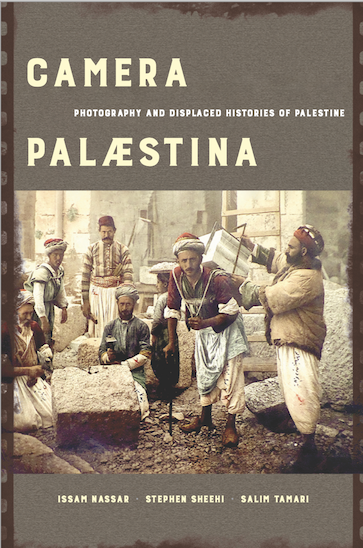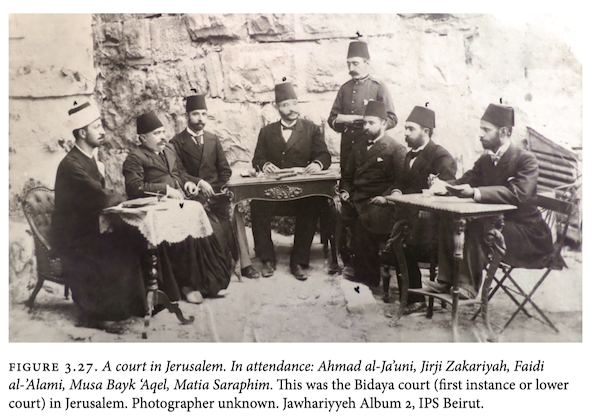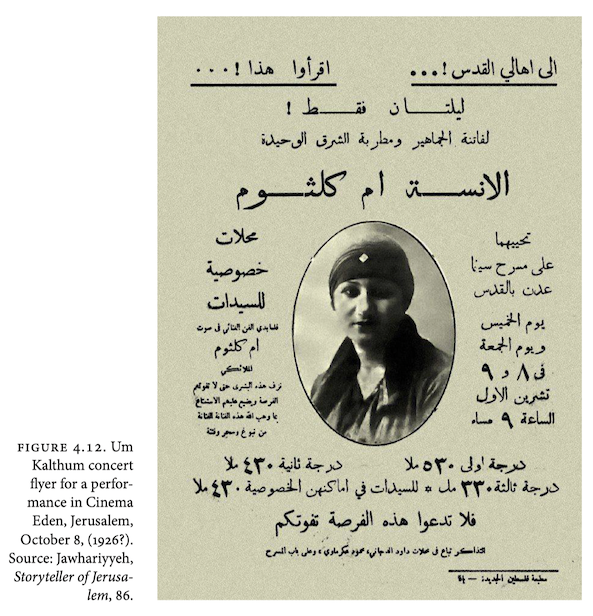This is a fabulous new book from the University of California Press discussing photographs from late 19th and early 20th century Palestine from seven notebooks by Wasif Jawhariyyeh (1904–1972) that contained some 900 images. And it is available for download as open access. Below is one of the images, as well as a flyer for a concert in Jerusalem by Umm Kalthum. Check it out…
Category Archives: Architecture
Tower of Babel, Saudi Style
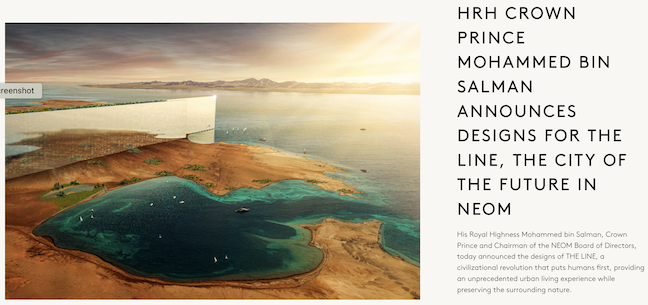
Long before Abraham/Ibrahim left Ur of the Chaldees for the promised land and became the ancestral icon of Judaism, Christianity and Islam, there was that architectural wonder called the Tower of Babel. As noted in the eloquent phrasing of the King James Version of Genesis 11:4: “And they said, Go to, let us build us a city and a tower, whose top may reach unto heaven; and let us make us a name, lest we be scattered abroad upon the face of the whole earth.” Readers of the text know what happened with that bravado venture. As a refresher, here is how the artist Pieter Bruegel the Elder imagined that ziggurat tower in 1563.
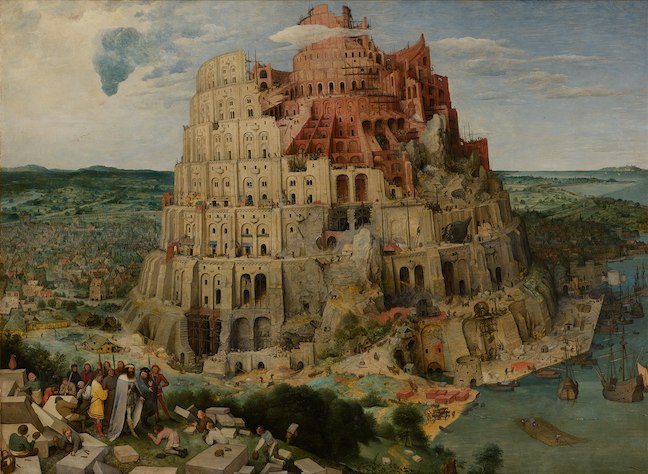
Now what if instead of a massive tower, such an old-fashioned idea, a new world wonder was created with the narrow ribbon of an artificial skyscraper city some 75 miles long, and some 656 feet wide? One set of plans would make this the most eco-friendly living space ever conceived:
THE LINE will eventually accommodate 9 million people and will be built on a footprint of just 34 square kilometers. This will mean a reduced infrastructure footprint, creating never-before-seen efficiencies in city functions. The ideal climate all-year-round will ensure that residents can enjoy the surrounding nature. Residents will also have access to all facilities within a five-minute walk, in addition to high-speed rail – with an end-to-end transit of 20 minutes.
This rival to The Pyramids would reach 1600 feet into the sky, thus becoming taller than the World Trade Center that several Saudi citizens destroyed in 2001 by crashing an airplane into the building. Of course such a major building enterprise would cost a lot of money, like a trillion dollars. I wonder what country would have that kind of funding available and what kind of resurrected Nimrod would think of such an idea?
Guess what? The plans are now on the board with the NEOM project known as “The Line”. You can read all about it on all kinds of websites, like NPR, The Independant, The Guardian, Time Out, and many other sources by typing “NEOM The Line” into Google. The patron of this marvel is His Royal Highness (I guess the Highness in his title inspired the idea to have the highest city in the world) MBS of the Kingdom of Saudi Arabia. It would have been nice to read a review of this fiasco by the Saudi journalist Jamal Kashoggi, but he is no longer around.
Of all the places on earth, where would be the best location for this ethereal construction project? Why not at the crossroads of the planet? Now that all roads no longer lead to Rome, I guess that would be the Arabian desert in Saudi Arabia. After all who would not want to live in a natural setting with miles and miles of sand and rocks and hardly any sign of wildlife? Unfortunately there are only a few camels left in the Saudi desert, since most are now getting ready for beauty pageants. But at least there will not be the nuisance of fast-driving joy-riding by Saudi youth through the streets, since there will not be any streets. Instead, I suspect that people will get around by doing what they did on the TV show The Jetsons. Of course, Saudi lifestyles will still be enforced, so women will need a male escort and be veiled before taking that five-minute walk to anything they desire.
World reaction to this marvel of marvels is just beginning. Carlos Felipe Pardo informed NPR that “This solution is a little bit like wanting to live on Mars because things on Earth are very messy.” The choice of Mars is proper, since Venus would not be a good metaphor for Saudi censors due to all the naked images of the goddess Venus that are available on the web. I think there would be a positive response from endangered dictators like Vladimir Putin, since the Saudi government has given sanctuary to all kinds of nasty rulers in exile in the past, most recently Ben Ali of Tunisia. Idi Amin, the brutal ruler of Uganda, but clearly thought to still be a good Muslim in the Saudi style, spent his latter years in luxury as a guest of the Saudis.
The Tower of Babel was doomed from the start, but then Nimrod and his like did not realize the vast oil and gas wealth underneath their feet in the Middle East. If they had, we would all be speaking the same language that Adam and Noah spoke. Even Star Trek never imagined that.
Yemen Film 1973

This exquisite film was produced in 1973 and filmed in 1972, thus representing Yemen half a century ago. It is now available on Youtube. The filmmakers were Karen and Alain Saint Hilaire. The camera was a bolex ebm electric. It has filmed when Qadi al-Iryani was the head of government. There are scenes from the Tihama, Sanaa, Sa‘da, Ma’rib, etc, including many crafts, fishing, agriculture, a funeral, celebration of the end of the civil war and much more. It is well worth spending two hours to watch this archival film of a Yemen now largely past but not forgotten.


Source for Arabic pdfs
Here is a very useful source for downloading pdfs of Arabic texts on a wide range of subjects. Check it out here: https://ebook.univeyes.com/disciplines
Cairo in Old Photographs

Check out this website for a number of photographs of Cairo in the early part of the 20th century.
Lebanese Music at Baalbek

This is a beautifully filmed and played Youtube video of Lebanese music performed in the ruins of a temple in Lebanon.


Bulldozing Islamic Jeddah

The current de facto ruler of Saudi Arabia, MBS, has promoted a major development scheme entitled Vision 2030. This time, instead of sending henchmen with cleavers, he is authorizing imported Western bulldozers to basically turn the older parts of the historic port of Jeddah into a wannabe Dubai. As noted in a recent article on Qantara:
“Currently, the areas most affected by the destruction are those to the south and east of the old city, the Balad, parts of which have been designated UNESCO World Heritage sites. Prior to evacuation, between 10,000 and 50,000 people lived in each of these neighbourhoods. That means tens of thousands are likely to lose their homes. Estimates circulated by dissidents and demolition critics range from hundreds of thousands to one million."
The port of Jeddah has been the main stopping point for Muslim pilgrims on their way to Mecca for almost fifteen hundred years. It is described by early geographers in detail, given the amount of travelers who passed through. For the modern kingdom, however, history means nothing and can be erased by the whims of the super rich. This continues the destructive Wahhabi impulse that sacked Kerbala in 1802, as described below by ‘Uthman b. Abd Allah b. Bishr (d. 1872) in his Unwan al-Majd fi Tarikh Najd (Mecca, 1930):
“In the year 1802, Ibn Sa’ud made for Karbala with his victorious army, famous pedigree horses, all the settled people and Bedouin of Najd, the people of Janub, Hijaz, Tihama and others…The Muslims [i.e. the Wahhabis] surrounded Karbala and took it by storm. They killed most of the people in the houses and the markets. They destroyed the dome above al-Husayn’s grave. They took away everything they saw in the shrine and near it, including the coverlet decorated with emeralds, sapphires and pearls which covered the grave. They took away everything they found in the town—possessions, arms, clothes, fabric, gold, silver, and precious books. One cannot even enumerate the spoils! They stayed there for just one morning and left after midday, taking away all the possessions. Nearly 2000 people were killed in Karbala.”
When the well-primed news media talk about reform in Saudi Arabia, it is worth noting that reform has a long way to go, given the roots of its blood-soaked Wahhabi past. It will take more than letting women drive at the same time that women who protest are jailed, basic human rights in the kingdom are ignored, and heads are still chopped off in public. Even the chopping up of a journalist who dared to call out the corruption is now ignored, because of the profit for a family which defies the morality of the country’s own Prophet. As long as the Saudi regime buys Western military supplies, they are given free rein to use them, resulting in the world’s worst humanitarian disaster in Yemen, with thousands dead and more dying every day, and fueling the sectarian divide between the Saudis and Iran.
There is a saying that blood is thicker than water, but it seems that for the Saudi elite it is oil which is thicker than either blood or water. They have plenty of oil, have shed lots of blood and are desperate for water. All this leads to an economic domino effect: the world craves oil, oil revenues fuel a family wealth fund which spreads an intolerant interpretation of Islam worldwide, and then much of the oil revenues come back to oil-hungry countries who sell weapons to the Saudis.
Imagine if Greece leveled the Parthenon for a shopping mall and Italy replaced the Colloseum with a football field. In a sense that has already happened to Mecca and Medina. Welcome to Saudi Arabia in 2030…
